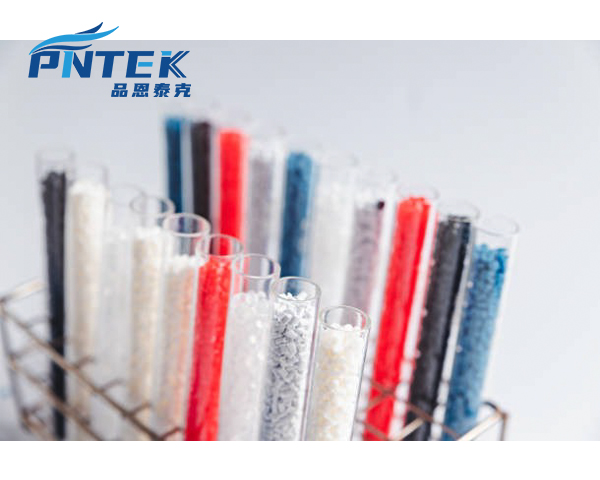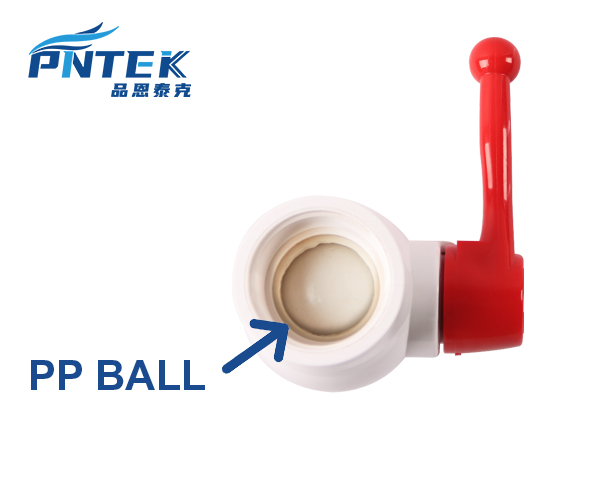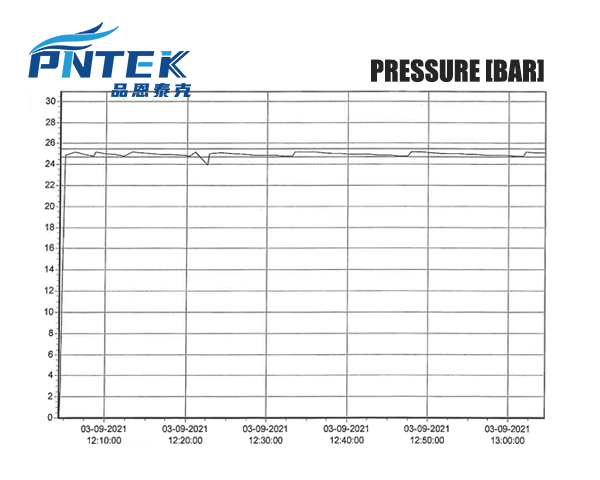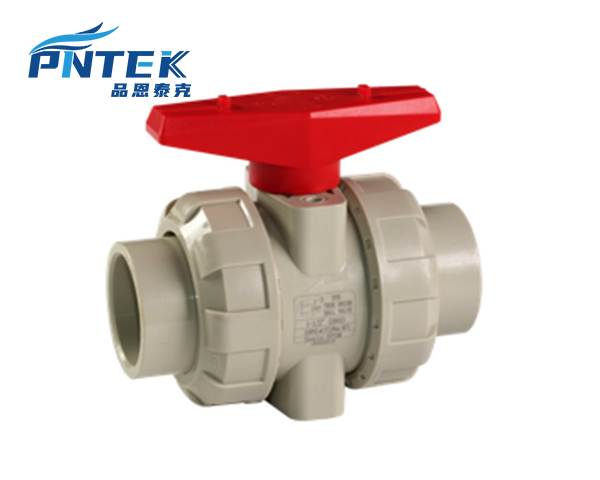You need a valve for a chemical line, but standard PVC is not an option. Choosing the wrong material could cause leaks, dangerous spills, and costly damage to your entire system.
A PP ball valve is a shut-off valve made from polypropylene, a thermoplastic polymer. It is specifically chosen for its exceptional resistance to a wide range of acids, bases, and chemical solvents, especially where PVC would fail.

When I talk with my partners like Budi in Indonesia, the conversation often goes beyond standard water applications. Many of his customers work in industries like chemical processing or water treatment, where the fluids are much more aggressive than plain water. For these jobs, simply using a standard PVC valve is not enough. You need a material that is built to handle harsh conditions without degrading. That material is often polypropylene, or PP. It provides the safety and reliability needed for these critical industrial applications.
What is the full form of PP in valves?
You see “PP” listed in a catalog but are unsure what it stands for. This makes it difficult to look up its properties or explain its benefits to your customers with confidence.
The full form of PP in valves is Polypropylene. It is a highly durable and lightweight thermoplastic that is part of the same family of plastics as PVC (Polyvinyl Chloride) and PE (Polyethylene).

Polypropylene is one of the most versatile plastics in the world. It is a workhorse material used in everything from car parts to laboratory equipment because of its unique set of properties. In the world of valves and piping, its main benefit is its incredible chemical resistance. Unlike PVC, it can handle many strong acids, alkalis, and organic solvents without breaking down. This is why we at Pntek have a dedicated line of PP valves. We know that for certain industrial jobs, there is no substitute. Understanding that “PP” means polypropylene is the first step to selecting the right valve for a tough chemical application.
Polypropylene (PP) vs. Polyvinyl Chloride (PVC)
| Property | Polypropylene (PP) | Polyvinyl Chloride (PVC) |
|---|---|---|
| Material Name | Polypropylene | Polyvinyl Chloride |
| Primary Use | Chemical industry, labs, electroplating, industrial applications. | Water transport, irrigation, residential plumbing, pools. |
| Chemical Resistance | Excellent; especially against acids, bases, and solvents. | Good; but vulnerable to certain solvents and chlorinated compounds. |
| Temperature Limit | Higher; can often handle fluids up to 80-90°C (175-195°F). | Lower; typically limited to 60°C (140°F). |
| Connection Method | Heat fusion (welding) is common, also available with sockets/threads | Solvent cement (gluing) for socket ends, threading. |
What is a PP ball?
You see a valve with a PVC body but a PP ball. This mix of materials seems strange, and you wonder if it is a cost-cutting measure or a feature with a real purpose.
A PP ball is the rotating sphere inside a valve made from polypropylene. Using a PP ball inside a PVC valve is a smart design choice that improves chemical resistance for the valve’s core while keeping costs down.

This is a common point of discussion. The ball and the seats are the parts of the valve that are always in contact with the fluid, even when the valve is closed. They are called the “wetted parts.” The valve body, on the other hand, is only exposed when the valve is open. For applications with mildly corrosive fluids, you may not need the entire valve body to be made from expensive, high-grade material. By using a chemically resistant PP ball inside a standard PVC body, we create a cost-effective valve that still offers enhanced protection where it matters most. It is about providing a targeted solution that balances performance and budget for our partners’ specific needs.
What is the pressure rating of a PP ball valve?
You know PP is good for chemicals, but can it handle the pressure? Using an underrated valve is a major safety risk that could lead to a system blowout and dangerous chemical spills.
The pressure rating for Pntek’s PP ball valves is PN16, which is 16 bar or about 235 PSI at room temperature (20°C). It is critical to remember this rating decreases as the fluid’s temperature increases. Always check the manufacturer’s pressure-temperature chart.

Our PP ball valves at Pntek have a robust PN16 rating. This means they can handle 16 bar of pressure, which is roughly 235 PSI. This high rating is a mark of industrial quality, but it is not the full story. The most important thing I explain to partners like Budi is that this pressure rating is directly tied to the fluid’s temperature. All thermoplastics, including polypropylene, get softer and less rigid as they get hotter. As the material softens, its ability to contain pressure decreases significantly. Ignoring this ‘derating’ curve is not just bad practice; it is dangerous. We provide a clear chart with our valves to prevent system failure and ensure our customers’ safety is always the top priority.
The Critical Role of Temperature Derating
| Fluid Temperature | Max Operating Pressure (PN16 Valve) |
|---|---|
| 20°C (68°F) | 16 bar (235 PSI) |
| 60°C (140°F) | 6.4 bar (94 PSI) |
| 80°C (176°F) | 3.2 bar (47 PSI) |
Note: This is an example for a PN16 valve. Always consult the specific Pntek data sheet for exact figures.
What is a PP-H valve?
You come across different types of PP, such as “PP-H.” You are not sure what the “-H” means or if it is a different material you need to worry about when ordering.
A PP-H valve is made from Polypropylene Homopolymer. This is a specific, highly rigid grade of PP known for its excellent strength, stiffness, and high-temperature performance, making it ideal for industrial valves and fittings.

Not all polypropylene is created equal. The “-H” stands for Homopolymer, which means the plastic is made from only one type of monomer building block (propylene). This results in a material that is very strong and stiff, which is exactly what you want for a valve body that needs to contain high pressure and resist bending. There are other types, like copolymers (PP-B, PP-R), which are made by adding another monomer. These other types are more flexible or have better impact strength at low temperatures, making them suitable for other things, like pipes that need to flex. At Pntek, we choose PP-H for our industrial valves because its rigidity and heat resistance provide the best performance and longest service life.
Common Types of Polypropylene
| Type | Full Name | Key Properties | Best Use Case |
|---|---|---|---|
| PP-H | Homopolymer | High stiffness, strength, excellent heat & chemical resistance. | Valves, industrial fittings, chemical tanks. |
| PP-B | Block Copolymer | High impact strength, especially at low temperatures. | Battery cases, industrial parts needing impact toughness. |
| PP-R | Random Copolymer | Softer, more flexible, good long-term heat resistance. | Hot and cold water plumbing pipes. |
Conclusion
A PP ball valve is a vital component for safely handling chemicals. By understanding its material properties, pressure limits, and different grades like PP-H, you can choose the right valve for demanding industrial jobs.
Post time: Sep-24-2025




